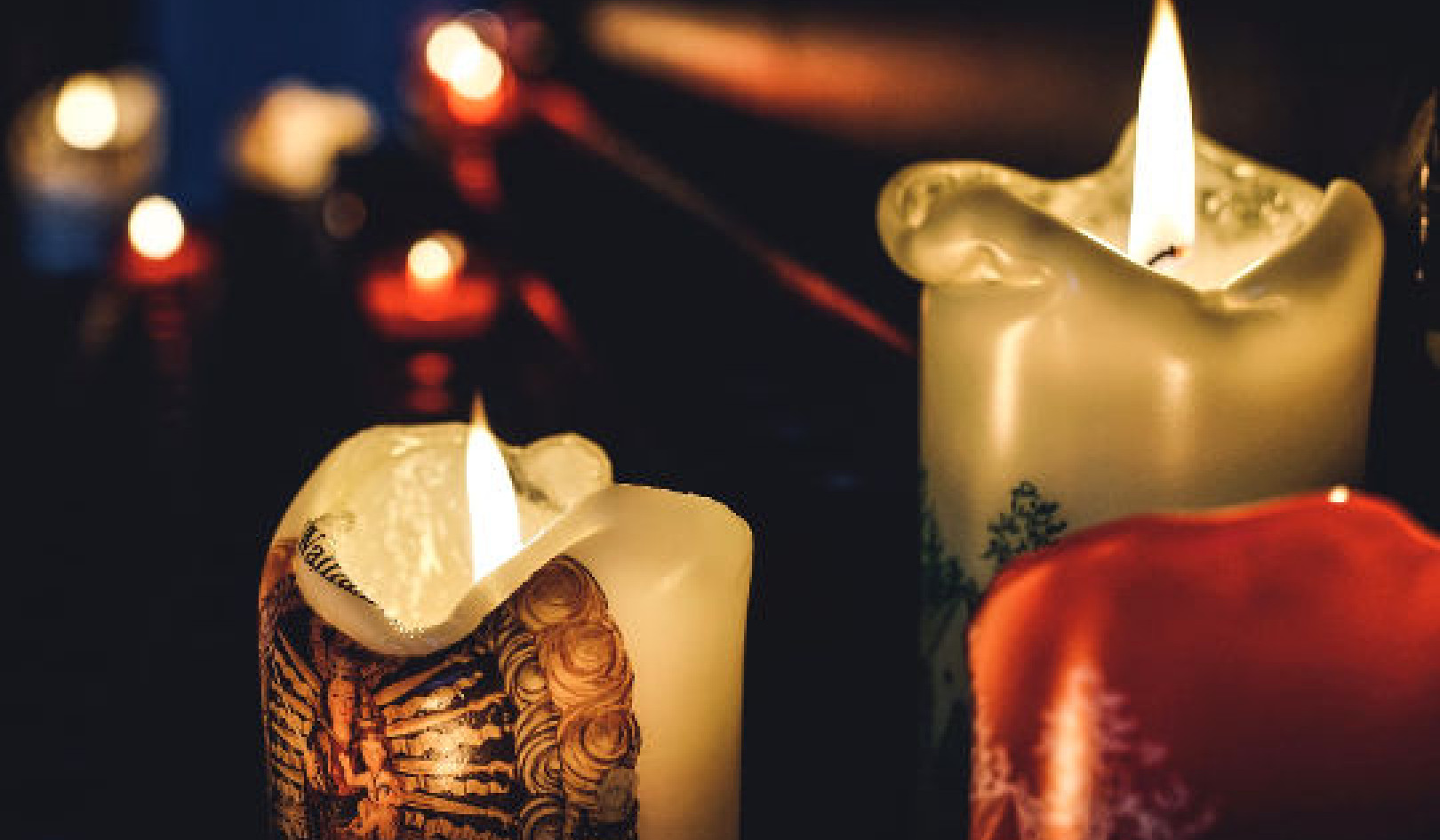Human beings are far more sense-ative than can be accounted for by sight, hearing, touch, taste, and smell. We react in different ways to people and places, “feeling” them to be beneficial to us or not, although such differences cannot be accounted for by the way they look.
A person might walk into the room and appear perfectly normal, in that they are dressed like everyone else and behave in much the same way, but we might feel suddenly, unaccountably distressed. Or we might walk into a room and feel uncomfortable in it, although it’s clean and well furnished. It may even be our own home that feels, at times, uncomfortable in a way we cannot explain.
Unseen energies are a part of life and, although invisible, affect us deeply and even change the course of our actions. People say “I just want to get out of here”, and although we may not have the same feeling, we understand that some unpleasant energy phenomenon has taken place, and reply, “Okay, let’s go.” You often hear people say of a person he or she “saps my energy” and although there’s no energy to see, we know exactly what they mean, and sympathize. You even hear people occasionally say “I felt a presence in the room” and although we don’t know exactly what this “presence” is, we’ve known similar experiences at some point in our lives, and accept what they say.
Even though we may have a limited vocabulary to describe these invisible energy experiences, they are there nonetheless. If invisibility meant nonexistence, there would be no such thing as portable radios, televisions, and mobile telephones, because these are the receiving hardware that interpret bits of invisible information floatingthrough the air. Our bodies are the receivers of other, natural, unseen energies, some of which are not welcome in our lives.
Judging by the number of age-old talismans, ceremonies, and rituals people use around the world, dealing with these unseen forces has been a very widespread human activity, with them being variously perceived as “bad luck”, “the evil eye”, “spirits”, and in more modern times, “negative thought forms”, “distressed emotional frequencies”, and other similar terms. Some Christians wear a St. Christopher’s medal as a pendant, to protect them while traveling, or the cross of the Crucifixion, while a feng shui expert might rearrange the furniture in a building to redirect the “wind and water” forces, to bring good energies and fortune.
When dealing with the invisible forces, and despite differences in belief, geographical location, and time, people have often used fragrance as a protective shield between them and the perceived negativity. This manipulation of fragrance for spiritual ends binds people very distant from each other in belief, space, and time, and often they use the same widely dispersed species of plant to facilitate more or less the same effect. Cedarwood, pine, and juniper are among those plants that have been widely adopted in this way.
Native Americans living along the Thompson River burned juniper to keep “ghosts” away, and in Tibet juniper is offered daily to good spirits. In several Native American cultures, the aroma of burning sweetgrass or sage purifies the energies and attracts the “supernaturals”. In Arabic homes today, on Thursdays, frankincense is burnt in a censer and carried through the living rooms and bed- rooms to expel evil spirits and invite the angels in. In the souk in Cairo, Egypt, and elsewhere, people make a living going from shop to shop, censing each in turn with frankincense burnt in a censer, or even on a small piece of charcoal in a rusty tin can, to dispel any negative energy customers may have left behind, making the environment more inviting to potential customers.
Such practices have been going on for millennia. The ancient Mesopotamians, Egyptians, Greeks, and Romans all used fragrance not only to attract beneficial energy, but to keep inauspicious energies “at bay”. The Greeks fumigated homes with bay leaves, while in the early days of Rome, verbena or other fragrant plants were hung above doorways to deter il malocchio, the evil eye. Censers were kept burning by front doors in classical times, even by the poorer households.
In medieval Europe, “witches” were the feared bad spirit, and rituals were carried out at pivotal points in the year with the object of dispelling them from the vicinity. These often involved walking through the village or town waving bunches of smoldering fragrant herbs or woods, to send the aroma into every nook and cranny. Juniper and rosemary were among those widely used. In the feng shui spirit-placating rite, tun fu, incense is used.
Healing Agents of Today
Many of the incense ingredients used throughout history and today are healing agents — myrrh, frankincense, cinnamon, clove, hyssop, sage, cedarwood, juniper, cypress, and pine, among others. No wonder then that incense and fragranced ointments and salves, which may well have conferred health, should be seen as “protective” — a beneficent agent of the deity, and this was especially the case when it was thought that physical health was inextricably linked to spiritual health.
The unfortunate Europeans who suffered during the plagues of the fourteenth to seventeenth centuries must have been sure they had in some way transgressed when they read this in the Old Testament: “If thou wilt diligently hearken to the voice of the Lord thy God, and wilt do that which is right in his sight, and wilt give ear to his commandments, and keep all his statutes, I will put none of these diseases upon thee, which I have brought upon the Egyptians: for I am the Lord that healeth thee.”
The agents for healing at this time, these people’s saving grace, came in the form of fragrance and perfumers. Fragrant materials became highly sought after, especially rosemary, cloves, garlic, rue, melissa, rose, lavender, and juniper, and were vital protection when gathering with other people, in church for example.
Around 1700, British author Daniel Defoe described one such scene in London: “The whole church was like a smelling bottle; in one corner it was all perfumes; in another aromatics, balsamics, and a variety of drugs and herbs; in another salts and spirits.” In 1646 France, Arnaud Baric gave a full description of the role played by perfumers who, under the lead of “the health captain”, passed through houses fumigating them with perfume burnt on coal fires. At the end of the long day, the perfumers were themselves cleansed by standing in the “steaming room”, a cloth tent with perfume material boiling away in a pot.
Fragrant Plants
It is a curious thing that so many fragrant plants should he protective to the health. It is almost as if we are invited by the creative force of the universe to examine them, taste them, put them in our food, enjoy their aroma, and in other ways make use of them. The healing properties of many fragrant plants were of course well known in ancient times, which may account for the very widespread practice of aromatically cleansing strangers or guests before allowing them into the village or house.
A hundred years ago in central Borneo, the Blu-u Kayans burnt bundles of fragrant plehiding bark when strangers arrived, to drive away any accompanying “evil spirits”. In Turkey, Afghanistan, and Persia visiting guests were first cleansed by burning branches of fragrant plants or incense, while aboriginal Australians saved their hosts the trouble and came with their own lighted bark or fragrant burning sticks.
As well as fragrance, fire and loud noise have been widely employed, as author J. G. Frazer states in The Golden Bough, “for the purpose of disarming the strangers of their magical powers, of counteracting the baneful influence which is believed to emanate from them, or of disinfecting, so to speak, the tainted atmosphere by which they are supposed to be surrounded.”
Aromatic Cleansing
In the contemporary world, the practice of aromatic cleansing is still ubiquitous in the Middle East, where it is perceived as a hospitable kindness to guests. In tents in the desert, a few small pieces of aromatic resin may be put on the brazier, while in towns visitors are more likely to be greeted with rose water sprinkled from a long-stemmed gulabdan. Guests in Turkish households have lemon-scented cologne sprinkled on the hands, so it can be wiped on the arms and neck. This fragrant nicety is also offered by the conductor to passengers on long-distance buses.
Fragrance is also widely used to cleanse buildings, especially those used for spiritual practices. When Saladin retook the Mosque of Omar at Jerusalem from the Christians in 1187, he had it purified with rose water; and when Mohamet II captured the Church of Sancta Sophia in Constantinople in 1453, and made it a mosque, it was likewise first treated with rose. Sage is the most sacred herb of the Yuwipe Native American nation, and it is this that covers the floor of the medicine man’s house, as he goes about the purification process.
Fragrance and spirituality have always been inextricably linked. In Mesopotamia, four thousand years ago, incense was used both to attract the goddesses and gods, and to repel malevolent spirits. In Muslim terminology, jinn are said to be an order of spirits that can assume human and animal form and exercise negative influence over people, and pirs are people brought in to deal with them — often incorporating the inhalation of jasmine oil as part of the proceedings.
 This article is excerpted with permission from the book
This article is excerpted with permission from the book
The Fragrant Heavens, by Valerie Ann Worwood.
Published by New World Library, Notavo, CA 94949.
Toll free ordering at 800-972-6657 Ext. 52.
Visit their website www.newworldlibrary.com.
Info/Order this book
About The Author
 Valerie Ann Worwood has practiced cutting-edge aromatherapy for over twenty years. An aromatherapist to royalty and heads of state, she teaches and conducts workshops around the world and is an active member on the executive council of the International Federation of Aromatherapists and runs her own clinic in England. She is the bestselling author of The Complete Book of Essential Oils & Aromatherapy which is widely considered to be the definitive reference book on aromatherapy. She is also the author of The Fragrant Mind, Scents and Scentuality and the newly released Aromatherapy For The Healthy Child.
Valerie Ann Worwood has practiced cutting-edge aromatherapy for over twenty years. An aromatherapist to royalty and heads of state, she teaches and conducts workshops around the world and is an active member on the executive council of the International Federation of Aromatherapists and runs her own clinic in England. She is the bestselling author of The Complete Book of Essential Oils & Aromatherapy which is widely considered to be the definitive reference book on aromatherapy. She is also the author of The Fragrant Mind, Scents and Scentuality and the newly released Aromatherapy For The Healthy Child.




























